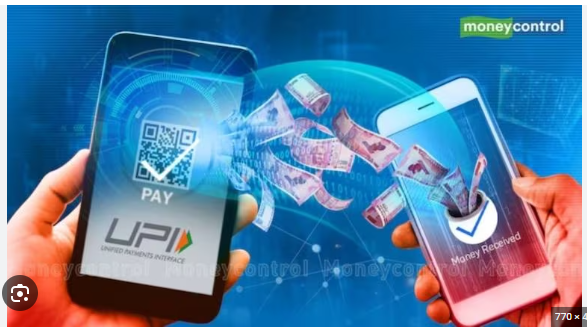In a recent RBI bulletin, the Unified Payments Interface (UPI) has emerged as a frontrunner in the realm of retail digital transactions, with projections indicating its potential to capture a remarkable 90% market share within the next five years.
Over the past few years, UPI has experienced a meteoric rise, fueled by its simplicity, interoperability, and ease of use. With UPI, users can make instant payments, split bills, pay for purchases online and offline, and much more, all with just a few taps on their smartphones. As UPI gains momentum, it heralds a new era of cashless payments and paves the way for a digitally empowered society.
Firstly, UPI offers a level of convenience that traditional payment methods struggle to match. Users can link multiple bank accounts to a single UPI ID, eliminating the need to remember complex account details for each transaction. Additionally, UPI supports 24×7 instant fund transfers, making it an attractive option for time-sensitive payments. This technology-driven revolution in India’s digital payments landscape is set to transform the way consumers conduct financial transactions, offering convenience, speed, and security on a massive scale.
As per the report, the month of May witnessed an impressive milestone in UPI transactions, with a total of 9.4 billion recorded. This represents a significant 143% year-on-year increase in successful transactions facilitated by the UPI Autopay feature. Additionally, there was a noteworthy 23% year-on-year rise in new mandate registrations. The Reserve Bank of India (RBI) also highlighted the growing prominence of person-to-merchant (P2M) payments, accounting for 57% of the overall transaction volume conducted through UPI. The total value of UPI transactions for May touched ₹14.3 trillion, according to National Payments Corporation of India’s (NPCI).
With the linking of Rupay credit cards to UPI, the share of P2M transactions in value terms is also anticipated to rise, owing to a higher average ticket size of credit card purchases than UPI.
It was said by UPI.
Not only this, the use of FASTag has also rapid increased and the whole country has benefitted from the use of this self-money-deducting technique. Toll collections crossed 300 million in volume terms and amounted to Rs 54 billion in May, the penetration reach of FASTag has crossed 97%.
By embracing UPI and nurturing an ecosystem of collaboration and innovation, India is well on its way to becoming a global leader in digital payments, setting the stage for a truly cashless economy. As UPI gains traction, it propels India closer to its digital future, offering convenience, security, and financial empowerment to millions of individuals and businesses.









